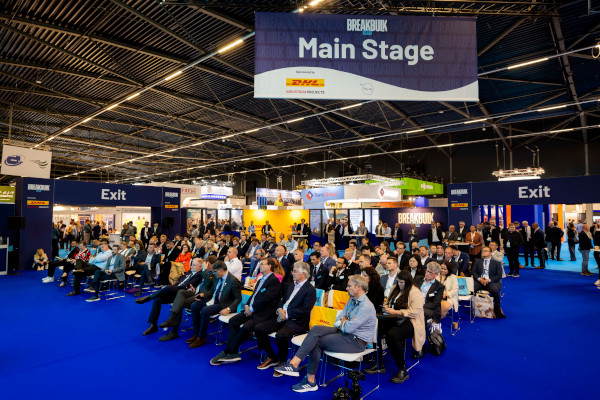Maintaining an Agile Supply Chain Amid Global Challenges

By Emma Dailey
Industry leaders convened in Rotterdam to discuss the biggest challenges impacting global supply chains in an engaging panel session at Breakbulk Europe 2024.
“Capacity & Contingency Planning: Maintaining an Agile Supply Chain”, moderated by Carsten Wendt, head of sales for high and heavy and breakbulk at Wallenius Wilhelmsen, brought together experts to address the project landscape, shifting risk appetites and customer expectations.
“Covid was a turning point,” Wendt said, pointing to the seismic shift the pandemic caused in supply chain dynamics. “Prior to this, our world was more or less in order and predictable. Corona completely changed the way we work.” The executive described the proliferation of “little fires everywhere,” such as equipment and labor shortages, capacity limitations, geopolitical disruptions and rate fluctuations.
Josefin Ahlgren-Spolander, head of industrial projects at DHL Global Forwarding, pointed to the Ukraine war as a major disruptor, while Michael Shakesheff, group managing director of Casper Group, highlighted the significant impact of Brexit.
 Fellow panelist Robin Townley, business product owner at Maersk Project Logistics, said: “These disruptions don’t just change the way that ships flow but the entire system around them.” The speakers stressed the importance of agility and flexibility to maintain uninterrupted global services.
Fellow panelist Robin Townley, business product owner at Maersk Project Logistics, said: “These disruptions don’t just change the way that ships flow but the entire system around them.” The speakers stressed the importance of agility and flexibility to maintain uninterrupted global services.
The panel delved into how risk, as well as risk appetite and perception, have evolved. “Risk appetite has dramatically changed over the last four to five years,” Shakesheff said.
This was echoed by the other panelists. “Risk appetite has gone up in some areas and down in others, it’s never really a simple answer,” Townley said.
He further differentiated between “the risks you can manage, and the ones you should avoid. It comes down to how you can manage risk given your assets.” Perspectives on risk and tools to manage it also greatly differ depending on “where you are in the supply chain,” he added. “We have to take risks, but there needs to be more calculation and mitigation.” Townley emphasized the need for transparency and the ability to offer multiple options to help manage customer expectations.
Shakesheff said: “Following the pandemic, we all de-risked, and our appetite has now increased again, but there are new risks now as well.” This was repeated by Ahlgren-Spolander, who stated: “Risk will always be there, but it is changing format.”
Panelists ended the session by discussing emerging threats. “The biggest risk is panic,” Ahlgren-Spolander warned. Townley foresaw significant geopolitical conflicts as a major concern in the next five years.
Wendt concluded on the importance of agility and preparedness. “We must continue to adapt, learn and invest in our supply chains to ensure they remain robust in the face of ever-evolving challenges.”
The session stressed that while the landscape was fraught with uncertainty, the industry was committed to finding innovative solutions to maintain an agile and resilient supply chain. “Ten years ago, any one of those events would have put a block on our supply chain,” reminded Shakesheff. “We have become much more resilient.”
The session was sponsored by Kaleris.
